Electoral results
| Chamber of Deputies | |||||
| Election year | Votes | % | Seats | +/− | Leader |
|---|---|---|---|---|---|
| 1904 | 8,008 (6th) | 0.5 | 3 / 508 | – | |
| 1909 | 73,015 (6th) | 4.0 | 18 / 508 | ||
| 1913 | 212,319 (5th) | 4.2 | 20 / 508 | ||
Italian Catholic Electoral Union Unione Elettorale Cattolica Italiana | |
|---|---|
| Leader | Ottorino Gentiloni |
| Founded | 1906 |
| Dissolved | 1919 |
| Preceded by | Opera dei Congressi |
| Merged into | Italian People's Party |
| Ideology | Christian democracy Political Catholicism Conservatism Clericalism |
| Political position | Centre to center-right |
| Colors | White Yellow |
The Italian Catholic Electoral Union (Unione Elettorale Cattolica Italiana, UECI) was a political organization designed to coordinate the participation of Catholic voices in Italian electoral contests. Its founder and leader was the Count Vincenzo Ottorino Gentiloni.
The Catholic Electoral Union was formed in 1906 after the suppression of the Opera dei Congressi ("Work of the Congress") following the encyclical Il fermo proposito of Pope Pius X. [1] It was headed 1909-16 by Count Ottorino Gentiloni. The Gentiloni pact of 1913 brought many new Catholic voters into politics, where they supported the Liberal Union of Prime Minister Giovanni Giolitti. By the terms of the pact, the Union directed Catholic voters to Giolitti supporters who agreed to favor the Church's position on such key issues as funding private Catholic schools, and blocking a law allowing divorce.
The Gentiloni Pact was born out of a secret deal in the run-up to the 1913 general election between Catholic voters and Giolitti's Liberal candidates who promised to support Catholic policies, especially funding of Catholic private schools, and opposition to a law permitting divorce. [2] It was estimated that over 200 deputies were elected through the Pact, enough to provide a majority for Giolitti. [3]
The Italian Socialist Party gained votes (from 19% to 23% of the voters) while the liberals were strengthened in the short run. In the past, Giolitti had co-opted many moderate Socialists (as well as members of other fringe parties). Giolitti himself was against political parties, which he felt were divisive and harmful to the "gentleman's game" of politics.
The Gentiloni Pact was condemned by Socialists and anti-Clerical allies of Giolitti. [2] They saw the Church as the bulwark to progress and felt betrayed into an alliance with Giolitti in the past. The Socialists would never trust Giolitti or the liberal system again.
This led the revolutionary faction of the Italian Socialist Party to gain strength in Italy although the Vatican became increasingly influential in Italian politics as well.
Eventually, Giolitti was forced to resign by his anti-clerical allies in March 1914, and was replaced as Prime Minister by Antonio Salandra on appointment of the King. [2] [3]
| Chamber of Deputies | |||||
| Election year | Votes | % | Seats | +/− | Leader |
|---|---|---|---|---|---|
| 1904 | 8,008 (6th) | 0.5 | 3 / 508 | – | |
| 1909 | 73,015 (6th) | 4.0 | 18 / 508 | ||
| 1913 | 212,319 (5th) | 4.2 | 20 / 508 | ||

The Prime Minister of Italy, officially the President of the Council of Ministers, is the head of government of the Italian Republic. The office of president of the Council of Ministers is established by articles 92–96 of the Constitution of Italy; the president of the Council of Ministers is appointed by the president of the Republic and must have the confidence of the Parliament to stay in office.
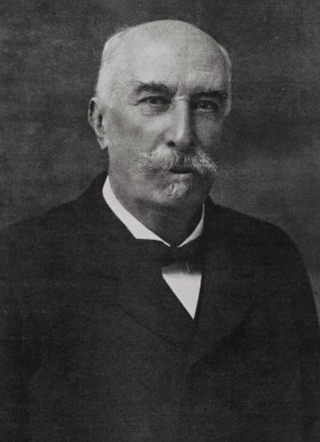
Giovanni Giolitti was an Italian statesman. He was the Prime Minister of Italy five times between 1892 and 1921. After Benito Mussolini, he is the second-longest serving Prime Minister in Italian history. A prominent leader of the Historical Left and the Liberal Union, he is widely considered one of the most powerful and important politicians in Italian history; due to his dominant position in Italian politics, Giolitti was accused by critics of being an authoritarian leader and a parliamentary dictator.

Democracy is Freedom – The Daisy, commonly known simply as The Daisy, was a centrist political party in Italy. The party was formed from the merger of three parties within the centre-left coalition: the Italian People's Party, The Democrats and Italian Renewal. The party president and leader was Francesco Rutelli, former mayor of Rome and prime ministerial candidate during the 2001 general election for The Olive Tree coalition, within which The Daisy electoral list won 14.5% of the national vote.
Liberalism and radicalism have played a role in the political history of Italy since the country's unification, started in 1861 and largely completed in 1871, and currently influence several leading political parties.

This articles covers the history of Italy as a monarchy and in the World Wars.
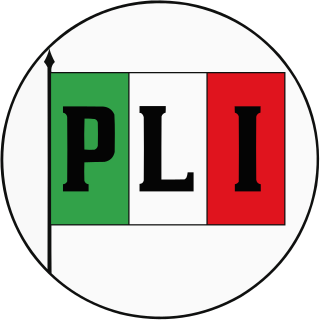
The Italian Liberal Party was a liberal and conservative political party in Italy.
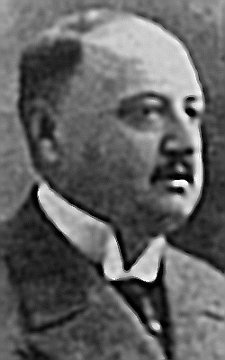
The Gentiloni Pact was the 1913 agreement between Italian Prime Minister Giovanni Giolitti and Count Ottorino Gentiloni, president of the Catholic Electoral Union from 1909 to 1916, to swing Catholic voters behind Giolitti's coalition in the 1913 general election.
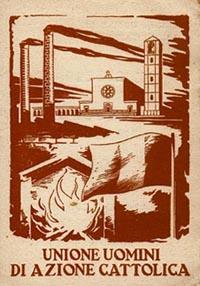
The Azione Cattolica Italiana, or Azione Cattolica for short, is a widespread Roman Catholic lay association in Italy.

Paolo Gentiloni Silveri is an Italian politician who has served as European Commissioner for Economy in the von der Leyen Commission since 1 December 2019. He previously served as prime minister of Italy from December 2016 to June 2018.

The Italian Reformist Socialist Party was a social-democratic political party in Italy.

The Kingdom of Italy was a state that existed from 1861, when Victor Emmanuel II of Sardinia was proclaimed King of Italy, until 1946, when civil discontent led to an institutional referendum to abandon the monarchy and form the modern Italian Republic. The state resulted from a decades-long process, the Risorgimento, of consolidating the different states of the Italian Peninsula into a single state. That process was influenced by the Savoy-led Kingdom of Sardinia, which can be considered Italy's legal predecessor state.

The Italian Radical Party, also known as the Historical Radical Party, was a political party in Italy. Heir of the Historical Far Left and representative of Italy's political left in its beginning, with the rise of the Italian Socialist Party, it came to represent centre-left politics. The party was associated with classical radicalism, republicanism, secularism, social liberalism, and anti-clericalism.
General elections were held in Italy on 26 October 1913, with a second round of voting on 2 November. The Liberals narrowly retained an absolute majority in the Chamber of Deputies, while the Radical Party emerged as the largest opposition bloc. Both groupings did particularly well in Southern Italy, while the Italian Socialist Party gained eight seats and was the largest party in Emilia-Romagna. However, the election marked the beginning of the decline of Liberal establishment.

Count Vincenzo Ottorino Gentiloni was an Italian politician, one of the early leaders of the Italian Catholic Azione Cattolica movement. He was born near Ancona, was active in Catholic politics from the 1890s, and served as president of the Catholic Electoral Union from 1909 to 1916.
General elections were held in Italy on 7 March 1909, with a second round of voting on 14 March. The "ministerial" left-wing bloc remained the largest in Parliament, winning 329 of the 508 seats.

The Liberal Union, simply and collectively called Liberals, was a political alliance formed in the first years of the 20th century by the Italian Prime Minister and leader of the Historical Left Giovanni Giolitti. The alliance was formed when the Left and the Right merged in a single centrist and liberal coalition which largely dominated the Italian Parliament.
Events from the year 1913 in Italy.
Events from the year 1921 in Italy.
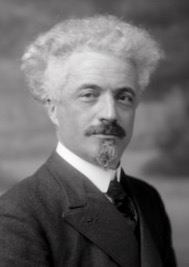
Marcello Soleri was an Italian politician and an officer of the prestigious Alpini infantry corps. He is widely viewed as one of the leading exponents of political liberalism in twentieth century Italy. Soleri was a Member of Parliament between 1913 and 1929. During 1921/22 he served successively as Italian Minister of Finance and as Italian Minister of War. After the fall of Mussolini he returned to government in 1944 as Italian Minister of Treasury under Prime Minister Bonomi.
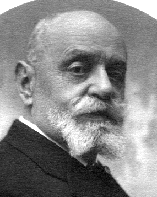
Tancredi Galimberti was an Italian politician during the first part of the twentieth century. He served as Minister for Postal and Telegraphic communications in the Zanardelli government between 1901 and 1903. In 1929, despite being openly equivocal about the leader's post-democratic approach to politics, he was appointed to the senate.